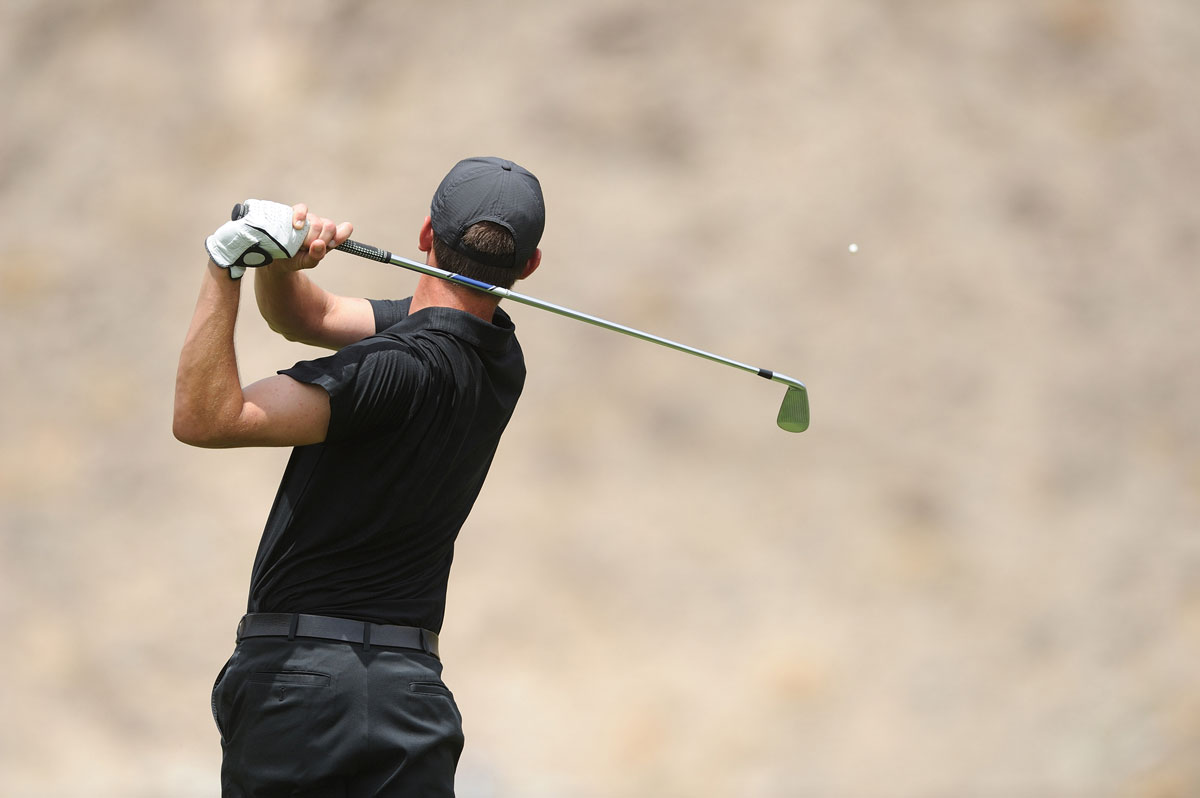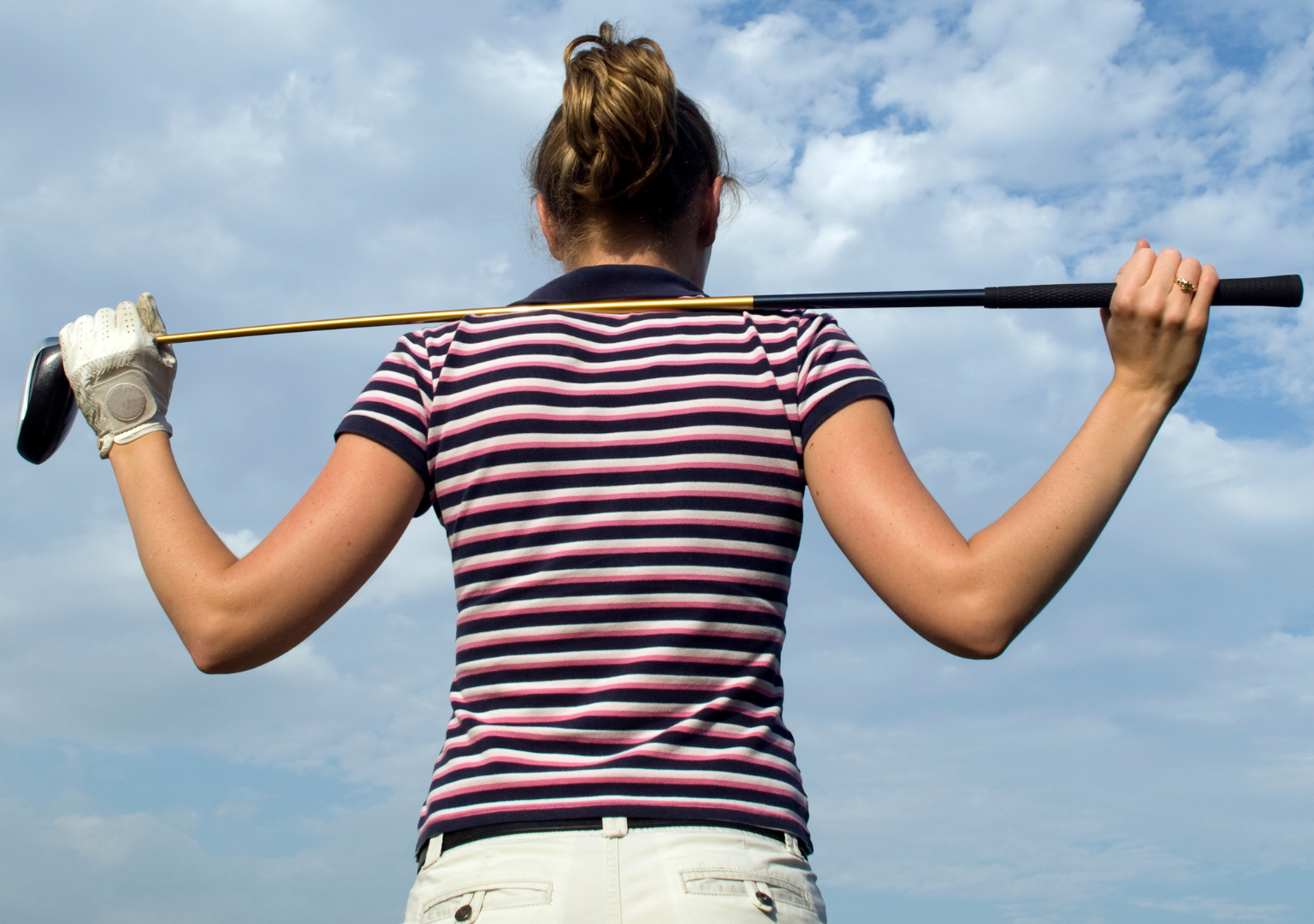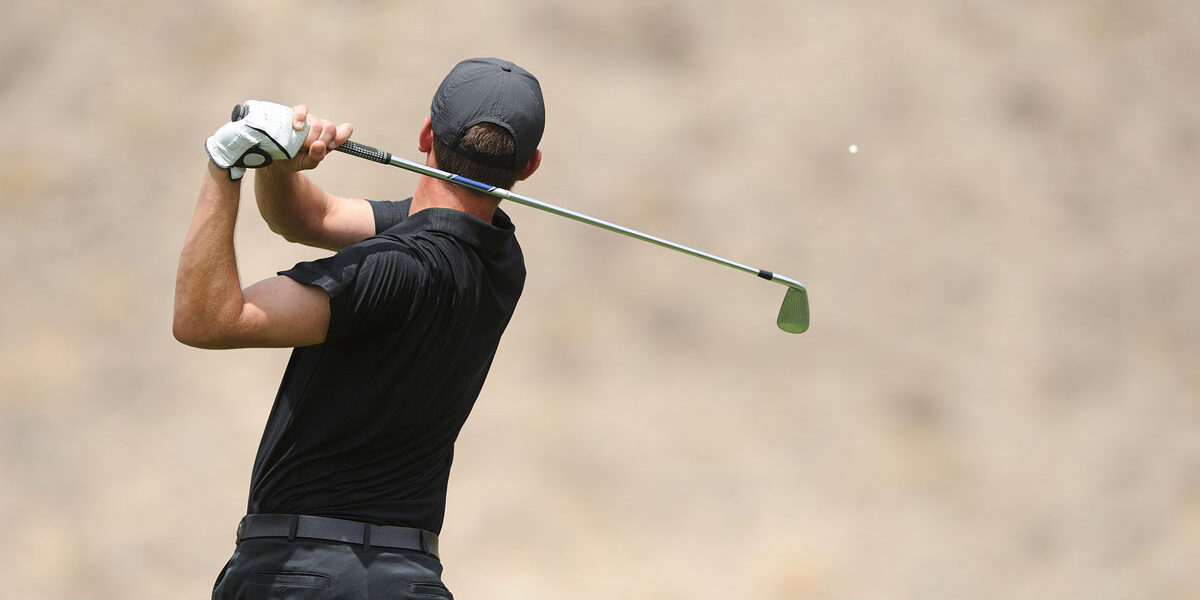Imagine that you want to improve your golf swing, whether you have an injury or not, but you suffer pain in your back that is affecting your rotation. A trainer may give you some exercises or tips to try to strengthen or relieve your back muscles.
However, your back may not be the issue at all! It could be any number of issues with your hip, or maybe your feet—if you continue with those exercises and it doesn’t help, you may find yourself continuing to play with that pain and not reaching your true golfing potential.

It takes a physical therapist trained in the details of how your body works while playing golf to accurately diagnose the issue, reduce your pain, help you recover from injury, and help you improve your form.
PRO~PT is the only series of major physical therapy clinics in the Central Valley that offers an injury and performance golf program with physical therapists certified by the Titleist Performance Institute (TPI). Our dedicated medical professionals will work with you on solutions to better your physical mechanics for golf, whether it’s recovering from an injury, relieving pain from golf, or simply wanting to maximize your potential.
Whether you’re located in our area or not, follow along through the rest of this blog to find out:
- Why seeing a TPI-certified medical professional is worthwhile
- Exercises you can do at home to improve your swing
- How to find a nearby expert certified by the Titleist Performance Institute
TPI-Certified Physical Therapy in the Central Valley
Several physical therapists across PRO~PT’s 14 clinics in the Central Valley and North Valley hold certification from the Titleist Performance Institute, professionally qualifying them to assess and manage physical issues as they relate to golf performance.
What Does TPI Certification Mean?
The Titleist Performance Institute is a training ground for fitness, golf, and medical professionals of many backgrounds to use Titleist’s decades-long research into golfers and their mechanics as a resource for anyone who wants to golf.
TPI describes itself as “an evidence-based, educational pathway designed to teach industry professionals how to increase player performance through a deep understanding of how the body functions during the golf swing.”
Being certified means that our physical therapists use the research and work that Titleist has developed over many years with professional players to know what goes into your golf swing and how to treat any issues from an orthopedic physical therapy perspective.
Would Physical Therapy Help Improve My Swing?
There are many different golf swings people have, whether you’re a junior golfer still developing your swing, or a professional who needs help alleviating pain that is affecting your performance.
However, every swing features the same kinematic sequence of muscle and body movements. Our TPI-certified PTs can help ensure everyone’s body moves at its highest level to get everything out of their swing that they can.
Where Can I Find a TPI-Certified Physical Therapist?
PRO~PT currently has an injury & training program at their Fresno West office with the Fresno North location also adding the program soon. We also occasionally hold free baseline golf mechanics screenings at the Bluff Pointe Golf Course and Learning Center in Fresno.
If you’re not located near any of our Central Valley physical therapy clinics, you can also use MyTPI.com’s tool to search for a TPI-certified expert near you.
How Does The PRO~PT Golf Training Program Work?
- Cash-based program, no referral needed
- The goal is to improve your mobility and strength to reduce/prevent pain, improve your golf swing, and likely increase distance!
- First session – head-to-toe examination using TPI screening tools to develop a plan for what you can do for your body in the gym, at home, and even on the course
- Personalized plans dedicated to your schedule
- Flexible session frequency
- $85/session

Golf-related Pain & Injuries
The physical movements you make while playing golf are very different than your everyday activities. This means that unless you golf very frequently, using TPI-certified physical therapy to help correct issues, your body won’t be used to the movements, and it may rarely result in pain or injury.
Possible injuries that may be seen in amateur and professional golfers alike:
- Back strains, both new or worsening of pre-existing back/sciatic nerve pains
- Shoulder strains, often related to the rotator cuff
- Elbow/Forearm strains from grip issues or accidental impact with ground
- Wrist sprains/strains, also from grip or impact issues
- Hip pains, also often associated with arthritis or tendon overload
- Knee pains, most often related to arthritis or meniscus irritation
- Foot/Ankle sprain/strains, often due to poor mobility or balance during swing
Treatments for Golf-related Pain & Injuries
The following have been noted as possible treatments for golf-related physical problems.
- Physical therapy & exercise
- RICE: rest, applying ice, compression, elevation
- Ice & hot packs
- Non-steroidal pain relievers
- Taping, braces, and compression equipment
- Deep-tissue massage
- Taking a break from golf
However, our TPI-certified physical therapists advise anyone to complete a screening before trying any of these treatments. A proper screening can direct your attention to the exercises and treatments that work for you.
Exercises for Golfers
Warming up before hitting the golf course is a good way to avoid injury. Also, the following exercises can help you strengthen your body, improve mobility & flexibility, and relieve pain during golfing movements. View the videos for further guidance.
Reach Roll + Lift Test
This exercise tests how good your shoulder and shoulder blade mobility is, as it relates to your golf swing.
- Kneel and sit back on your feet as best as you can either on the floor or on a mat.
- Bend down on your elbows so your forearms rest on the floor, keeping your elbows in and making fists with both of your hands.
- Keep one elbow between your knees while reaching out your other arm straight as far as you can with that hand’s palm down. (Tip: place your forehead on your stationary arm’s fist.)
- Rotate your extended arm’s palm toward the ceiling.
- Lift your extended arm up and back down.
- Bring your arm back into the starting position.
- Repeat with your other arm.
Lumber Lock Reach Backs
This exercise tests your thoracic rotation is to the left and right correlating to your backswing and follow-through.
- Kneel and sit back on your feet as best as you can either on the floor or a mat.
- Bend down on your elbows so your forearms rest on the floor, keeping your elbows in and making fists with both of your hands.
- Keep one elbow between your knees while placing the hand of your other arm behind your head. Your elbow should be roughly parallel to the ground.
- While keeping your hand on your head, rotate your entire body so your elbow points to the ceiling. (Tip: don’t shift your weight—keep your balance centered.)
- Rotate back to the starting position.
- Repeat with your other arm, twisting the other direction.
Targeted Cats + Dogs
This exercise helps players improve mobility in their lower back and identify where their center position and neutral spine position when they are setting up their swing.
- Kneel on the ground or on a mat and place your hands on the ground in front of you with straight arms.
- Arch only the lower portion of your back down (in a “dog” position).
- Move back and then arch only the lower portion of your back up (in a “cat” position).
- Repeat the movement.
Comerford Hip Circuit
This series of exercises focuses on strength and endurance of your hip’s internal and external rotators, which are critical for your golf swing. Included in this circuit are the Clamshell Exercise, Reverse Clamshell Exercise, Open Clamshell Exercise, and the Hip Extension and Internal Rotation Exercise.
- Lie down on the ground or a mat on your side, with your head supported by a pillow or rolled towel, your knees bent, your feet aligned with your body, and your hips aligned perpendicular to the ground.
- Do a Clamshell Exercise by bringing your top leg’s knee up while keeping both legs’ feet together.
- Do as many repetitions as you’d like.
- Do a Reverse Clamshell Exercise by bringing your foot up while keeping your knees together.
- Do as many repetitions as you’d like.
- Do an Open Clamshell Exercise by holding your top knee about six inches up, and doing the Reverse Clamshell Exercise movement. (Tip: don’t move your thigh or top knee position.)
- Do as many repetitions as you’d like.
- Stay in the Open Clamshell Exercise position but move your legs straight so your knees align with your body.
- Do a Hip Extension and Internal Rotation Exercise in this position by doing the Reverse Clamshell Exercise movement.
- Do as many repetitions as you’d like, keeping in mind that this last exercise usually burns more than the others.
90/90/90 Oblique Stretch
This exercise targets the large band of fascia through your entire trunk and hip to significantly improve the rotation of your swing.
- Sit with your right leg in front of you, making a 90-degree angle at your knees with your foot facing left. Move your left hip to the side with your left let making a 90-degree angle at your knees and your foot facing behind you.
- Rotate to the right, away from your left leg, placing your hands on the ground.
- Reach out until you’re down on your elbows, feeling a pull through the left side of your body.
- Reach out with your left hand.
- Breathe in as you raise your left hand.
- Breathe out as you lower your hand.
- Do as many repetitions as you’d like.
- Go back up on your hands, still rotated to the right side.
- Rotate further to the right and repeat the exercise.
- Repeat the full exercise with your other side.







